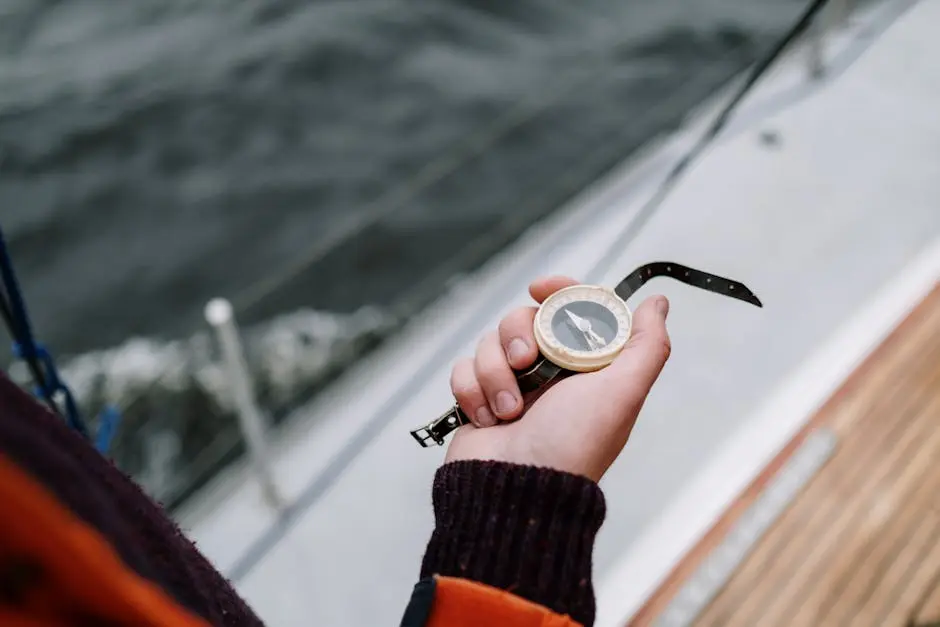
Understanding Marine Compasses: A Beginner's Guide
Navigating the open waters can seem daunting, especially for beginners. One essential tool every mariner should understand is the marine compass. In this guide, we’ll break down the basics of marine compasses, helping you gain confidence in using this crucial instrument for navigation.
What is a Marine Compass?
A marine compass is a navigational instrument that shows the direction of magnetic north. It’s vital for any sailor as it provides a reliable reference point when out at sea. Understanding its components and how it works is essential for effective navigation.
At first glance, it may seem like a simple device, but the marine compass is a sophisticated tool deeply rooted in the history of navigation. Its structure typically includes a magnetized needle, a compass card, and a housing. The needle swings freely to align with the magnetic field, while the card displays the cardinal directions that we often refer to.
When you hold a marine compass, you’re holding a piece of maritime history. It’s an instrument that has guided countless sailors across oceans and served as a fundamental tool in navigation. Whether you’re offshore or simply admiring the view from a dock, the marine compass remains an iconic symbol of adventure.
How Does a Marine Compass Work?
At its core, a marine compass consists of a magnetized needle that aligns itself with the Earth’s magnetic field. We’ll explore the science behind this mechanism and why the compass is accurate, despite various external factors.
The balancing act of a marine compass is fascinating. The needle floats within a fluid-filled housing, allowing it to pivot freely in response to the Earth’s magnetic forces. This design is crucial because it minimizes external influence, which can lead to inaccuracies. Additionally, environmental factors like nearby metallic objects or electrical systems can interfere with the reading, making it essential to be aware of your surroundings while navigating.
The marine compass not only provides direction but also works in conjunction with navigational charts and celestial markers. For instance, if you know your heading, you can cross-reference it with a nautical chart to determine your position on the water. Understanding this relationship can significantly enhance your overall sailing skills.
Types of Marine Compasses
There are several types of marine compasses available, each suited for different purposes. From traditional magnetic compasses to more advanced electronic options, we’ll discuss the pros and cons of each type to help you choose the best one for your needs.
Among the most popular types is the magnetic compass, revered for its simplicity and reliability. It does not require batteries and can be employed in a variety of conditions. However, it is also subject to magnetic variations that may affect its accuracy. For those seeking more precision, GPS-based compasses have become increasingly popular. While they offer advanced functionality and ease of use, they rely on electrical systems that can fail or become unresponsive in remote areas.
Other options include the fluxgate compass and the gyrocompass, each tailored for specific scenarios. The fluxgate compass can provide highly accurate readings and is often used in modern vessels. Meanwhile, the gyrocompass finds its place in larger ships where magnetic interference is a concern. The decision on which type to use depends largely on your sailing environment, personal preference, and the level of accuracy you require.
Reading a Marine Compass
Learning how to read a marine compass is crucial for effective navigation. This section will guide you through the process, from understanding the compass rose to interpreting the direction and true bearings.
When you look at a marine compass, the compass rose is the first thing to notice. This circular design shows the cardinal directions: north, east, south, and west. Each direction is divided further into degrees, offering precise orientation. By reading the needle’s point in relation to the compass rose, you can determine your current heading. It’s also important to understand that true north and magnetic north are not the same, which leads to the need for corrections.
In practice, familiarize yourself with how to hold the compass flat on your palm and keep it steady to get an accurate reading. As you learn to navigate, practice taking bearings of objects on the horizon, allowing you to create a mental map over time. Experience will build confidence and skill, turning what may seem like a convoluted process into second nature.
Common Mistakes and How to Avoid Them
Even experienced sailors can make mistakes with their compasses. In this section, we’ll highlight common pitfalls, such as magnetic interference and improper calibration, and offer tips on how to avoid them.
One of the most frequent errors involves misreading the compass due to distortion from nearby metal objects. Remember that metal disrupts the magnetic field. Keep your compass away from such influences, ensuring it reads accurately. Another mistake is failing to recalibrate the compass. Over time, compasses can lose their accuracy due to wear and tear, so regular checks are essential.
Lastly, a common oversight is forgetting to factor in magnetic declination. Depending on your location, the difference between true north and magnetic north can vary significantly. Investing time in learning how to adjust for this can save you from navigating in the wrong direction. Being aware of these mistakes means you’re already one step closer to mastering the art of navigation.
Ready to Navigate
Now that you have a foundational understanding of marine compasses, you can embark on your nautical adventures with greater confidence. Whether you’re planning to sail the seas or simply curious about navigation tools, remember that the marine compass has been guiding sailors for centuries. Embrace this historical instrument and enjoy your journey on the water!
